There are nine National Parks in Mississippi.
Mississippi's national park sites provide lots of recreational opportunities from taking a scenic drive along the Natchez Trace Parkway to exploring several Civil War Battlefields like Vicksburg, Tupelo, and Shiloh.
You can learn about the Civil Rights Movement at Medgar and Myrlie Evers Home National Monument.
My personal favorite is to enjoy the natural beauty of the sandy beaches and barrier islands of Gulf Islands National Seashore.
Just make sure to take time to enjoy Ocean Springs, a cute little coastal town with great restaurants and the home of the Tatonut.
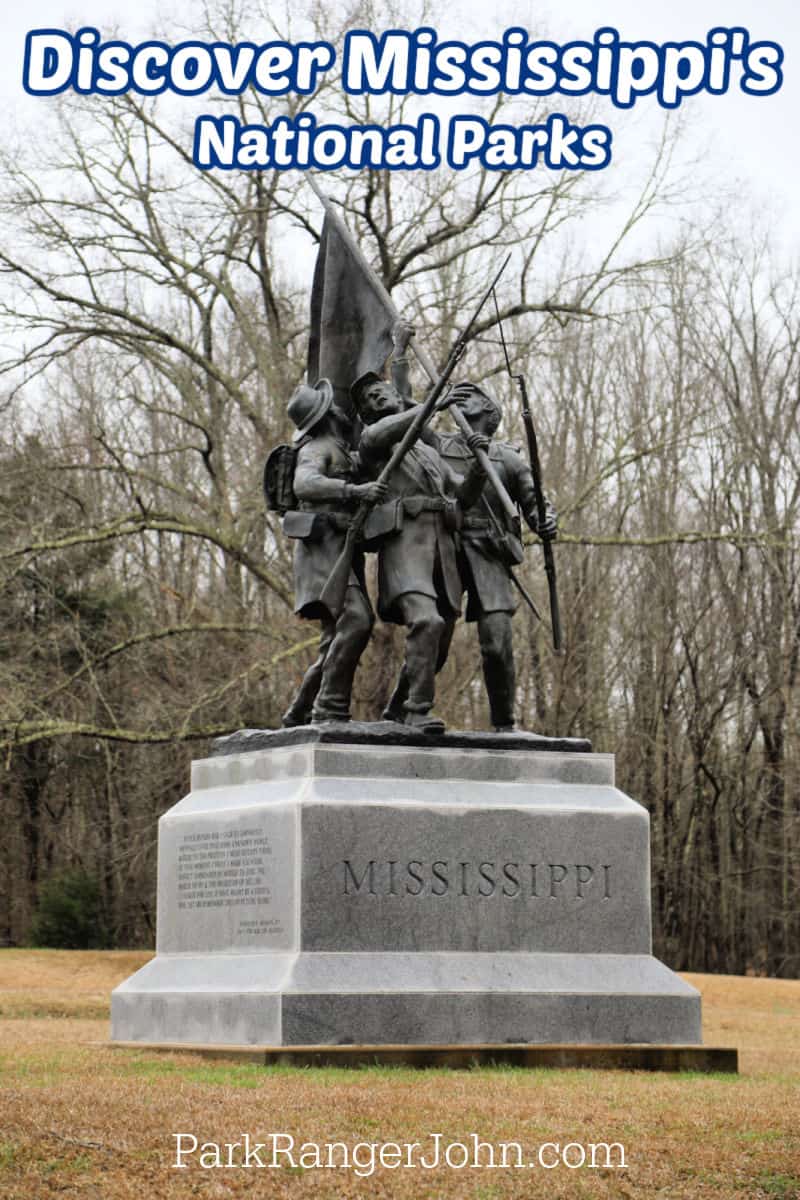
National Parks in Mississippi
Outside of Parks, Mississippi is known for its Southern Charm, Magnolias, and Blues and Bluegrass Music!
Many celebrities were also born here including Elvis Presley, Oprah Winfrey, Jim Hensen, and Britney Spears.
90% of farm-raised catfish comes from Mississippi and is commonly found on a menu. Of course, my favorite thing from Mississippi is Carmel Cake, a true Southern treat!
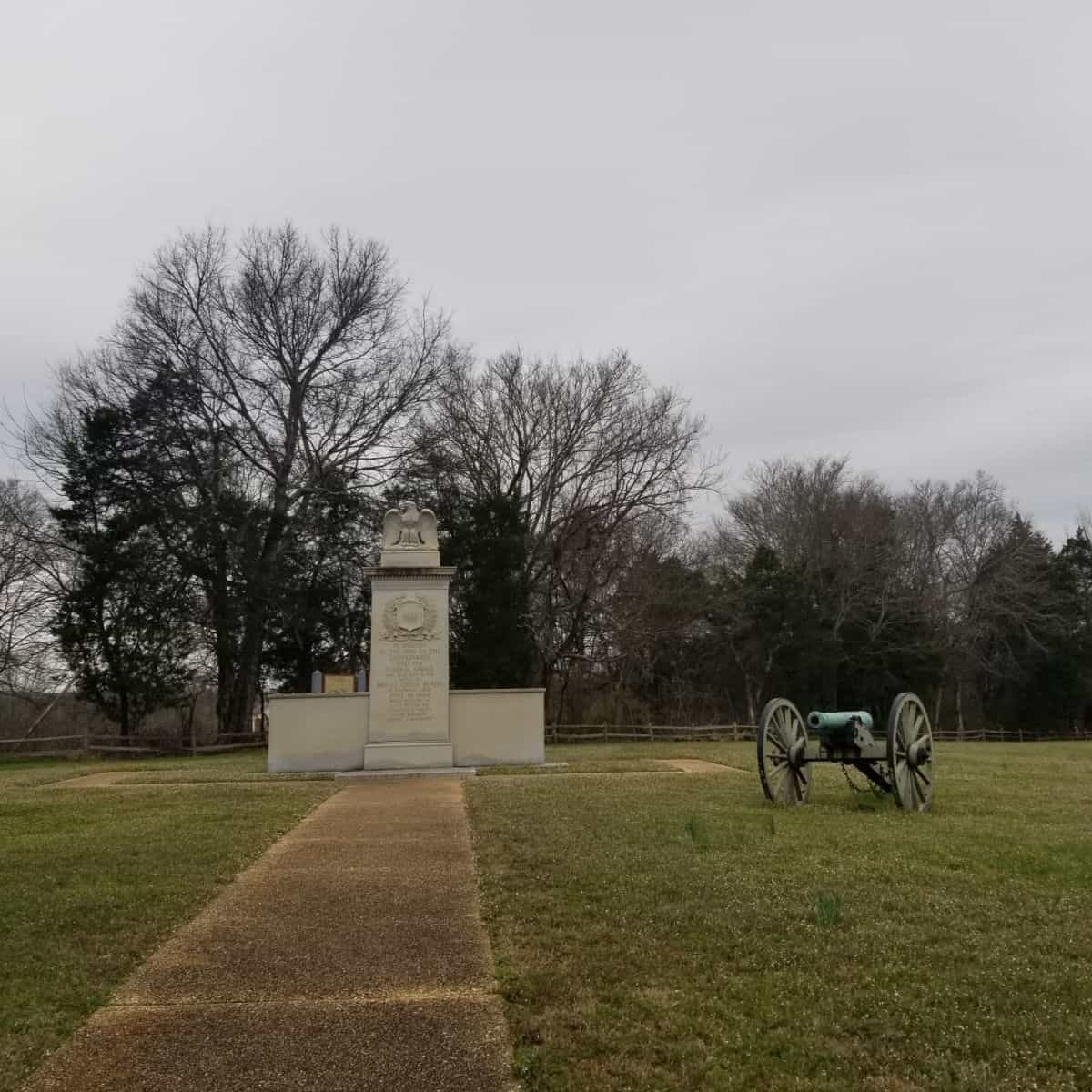
Brices Cross Roads National Battlefield Site
Top Things to do - Battle of Brices Cross Roads Driving Tour
Lodging - There are no lodging facilities within Brices Cross Roads National Battlefield Site. Visitors often stay in nearby towns and cities, such as Tupelo or Corinth, where more lodging choices are available.
Camping- There are no campgrounds within the site
Park Address - 260 Bethany Rd
Guntown 38849
Brices Cross Roads NBS is located in Northeastern Mississippi approximately 85 miles southeast of Memphis. The park is only 1 acre and offers the opportunity to visit a Civil War battle site.
Brices Cross Road Battlefield is the site of a Confederate Civil War victory that helped the Union. On June 10, 1864, a battle occurred at Brices Cross Roads that resulted in a win for the Confederacy.
Even with this win Union Major General William T. Sherman was able to keep his supply line on the rail line between Nashville and Chattanooga, Tennessee intact. After this battle, the Union went forward to capture Atlanta and march through Georgia to gain victory in the Civil War.
While the National Park Service only manages a 1-acre site there are an additional 1,400 acres managed by a local battlefield commission.
Emmett Till and Mamie Till-Mobley National Monument
Emmett Till and Mamie Till-Mobley National Monument is a new national park site located in Sumner and Glendora, Mississippi, and Chicago, Illinois.
Top Things to do - The Mississippi locations include the Tallahatchie County Courthouse and Emmett Till Interpretive Center in Sumner, Mississippi.
Lodging - There are no lodging options within the park
Camping- There are no campgrounds within the National Monument
Park Address - Roberts Temple Church of God in Christ, 4021 South State Street, Chicago, IL 6060
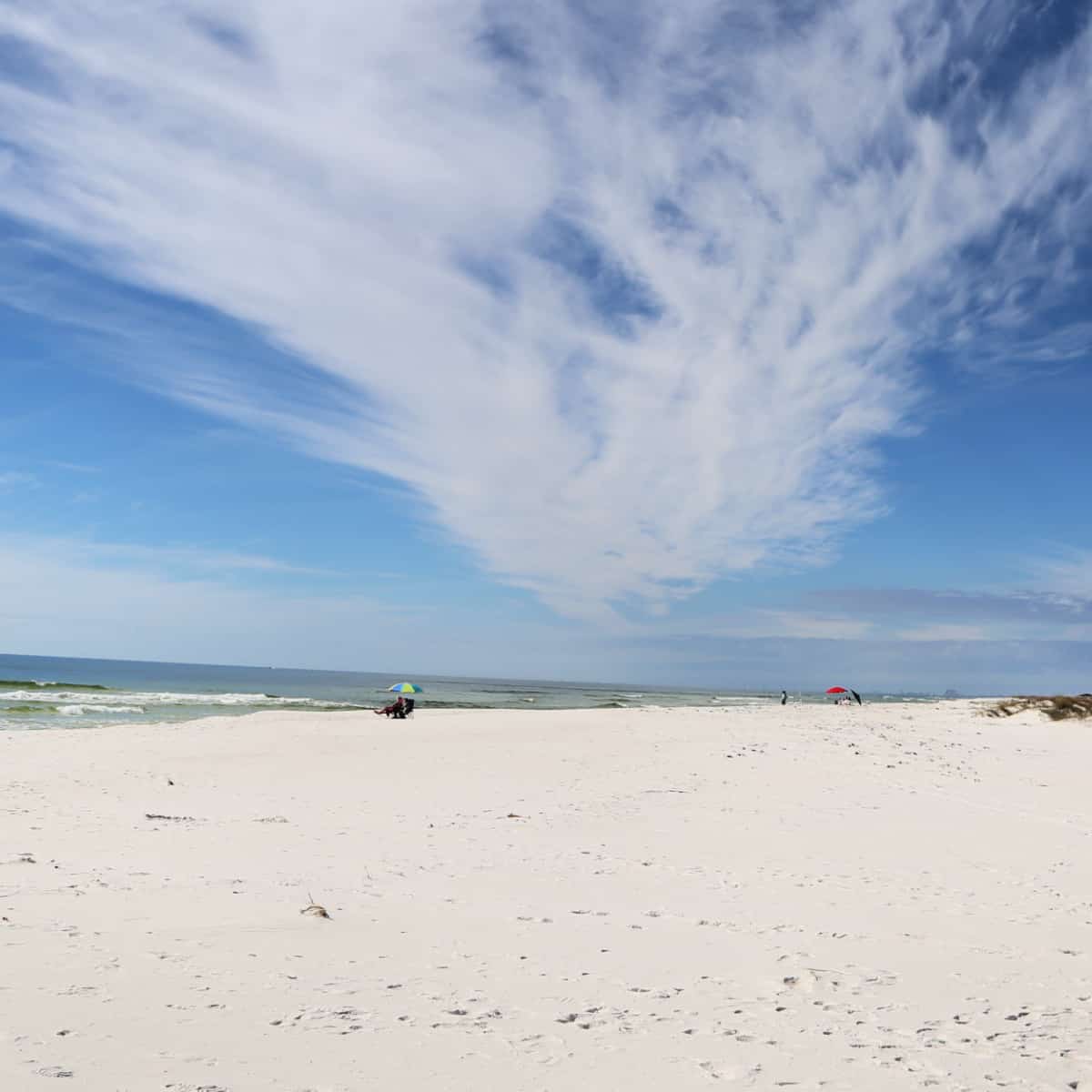
Gulf Island National Seashore
Top Things to do - Bird Watching, Hiking, Fishing, Camping, Boating, Ferry Cruise, Snorkeling, Diving, Swimming, Biking, Visiting Historic Sites
Lodging - While there are no hotels or motels directly within the park, you can find lodging options in nearby towns and cities along the Mississippi Gulf Coast. Ocean Springs, Biloxi, and Gulfport are some of the nearby areas with a range of accommodations, including hotels, motels, and vacation rentals.
Camping- The Davis Bayou Campground offers both tent and RV camping sites with amenities such as restrooms, showers, and picnic tables. It's a great way to immerse yourself in the natural surroundings of the park.
Park Address - Gulf Islands National Seashore - Mississippi District Headquarters
3500 Park Road
Ocean Springs, MS 39564
Gulf Islands National Seashore is located along the southern Mississippi coastline and Florida panhandle. There are twelve units within the park that offer swimming, beach exploring, fishing, bird watching and more.
You are about to enter one of the most magical places on Earth. Florida’s Gulf Islands National Seashore are worldwide renowned beach destination and you will soon discover why. The beaches are the perfect place to watch the sunset!
Visitors can spend their day enjoying the soft white and gorgeous Gulf of Mexico views. If you are interested in history there are multiple forts that can be explored. There are four visitor centers within the park.
Medgar and Myrlie Evers Home National Monument
Top Things to do -Tour Medgar and Myrlie Evers House, Myrlie's Garden, Consider visiting other historical and cultural sites in Jackson that relate to the civil rights movement and the city's history
Lodging - There are no lodging options within the National Monument
Camping- There is no camping within Medgar and Myrlie Evers Home National Monument
Park Address - 2332 Margaret Walker Alexander Drive
Jackson, MS 39213
The Medgar and Myrlie Evers Home National Monument in Jackson, Mississippi is officially the 423rd unit of the National Park System.
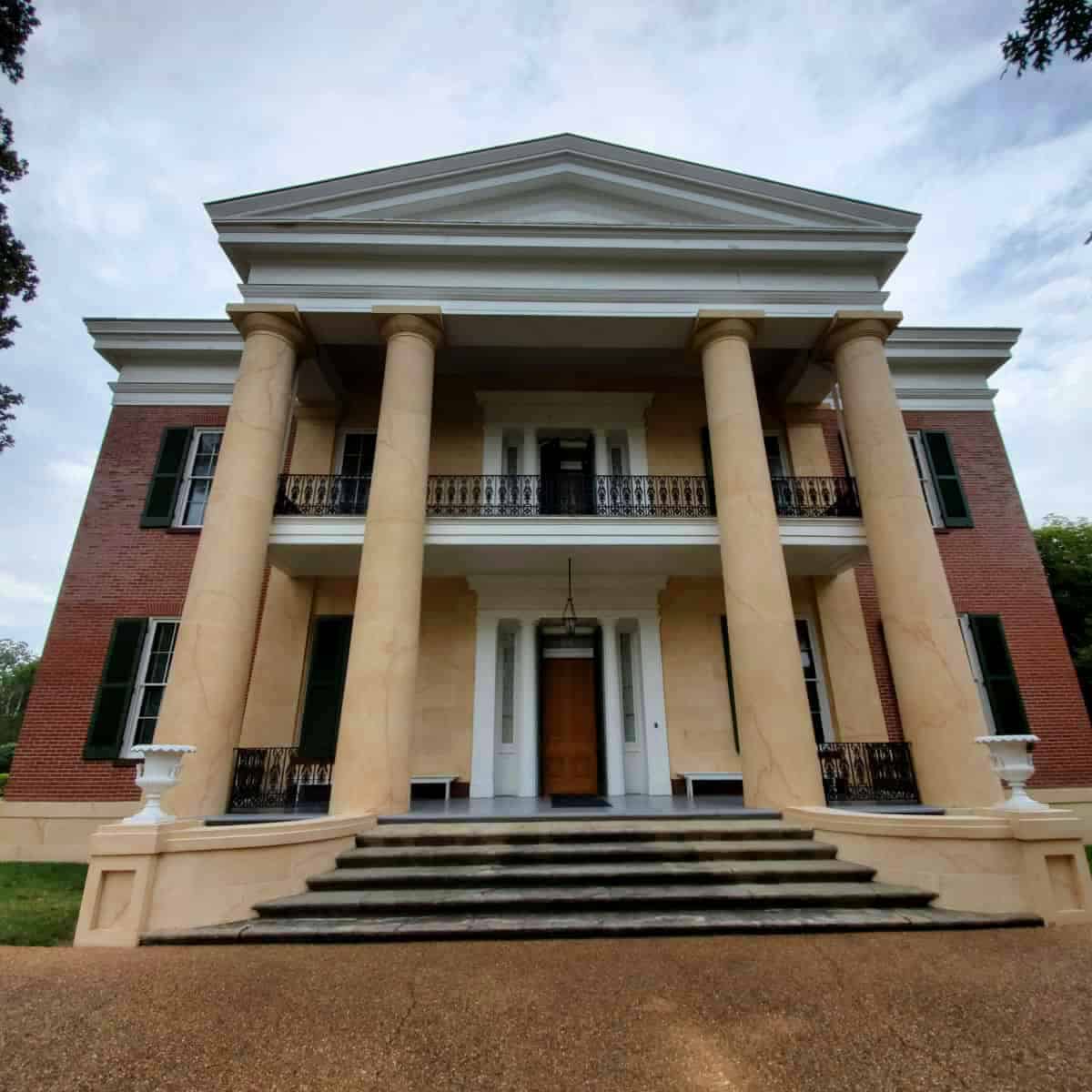
Natchez National Historical Park
Top Things to do - Visit the Natchez Visitor Center, Natchez Civil War Sites Driving Tour, Visit Forks of the Road, See Fort Rosalie, Explore Melrose
Lodging - Natchez National Historical Park has no park-managed lodging accommodations within the park. A wide range of accommodations are available within the community.
Camping- There are no campgrounds within the park
Park Address - 640 South Canal Street
Natchez, MS 39120
Natchez NHP is located in Southwestern Mississippi in the city of Natchez. The park is open year-round offering the opportunity to tour two restored antebellum homes.
The park tells the story of two sides of life in the antebellum South. Natchez, Mississippi was once the wealthiest city in the United States thanks to cotton. After the Civil War, the cities prosperity started to decline.
Melrose home and plantation was built in the late 1840s. The home was owned by John McMurran a wealthy lawyer and plantation owner along with his family. The house is a Greek revival mansion with fine furnishings. The house was considered one of the grandest houses in the region.
The McMurran's had as many as twenty-five enslaved people who cooked, tended the grounds, cared for the kids, and took care of the property.
Today you can take a guided tour of the house to learn about the lives of wealthy plantation owners and enslaved workers. One of the most interesting exhibits is the slave quarters. Make sure and stop to read the interpretive panels and learn more about enslaved worker's lives.
The William Johnson House is located in the heart of Natchez. Mr. Johnson was born into slavery but was freed by his owner. After being freed he went on to own three barbershops and a bathhouse.
Johnson and his family lived on the second floor of a building on State Street. You can take a self-guided tour of the house and visit the visitor center on the first floor.
The Natchez Hop-On Hop-Off Tour stops at the Melrose Plantation along with eleven other stops in the city and surrounding area.
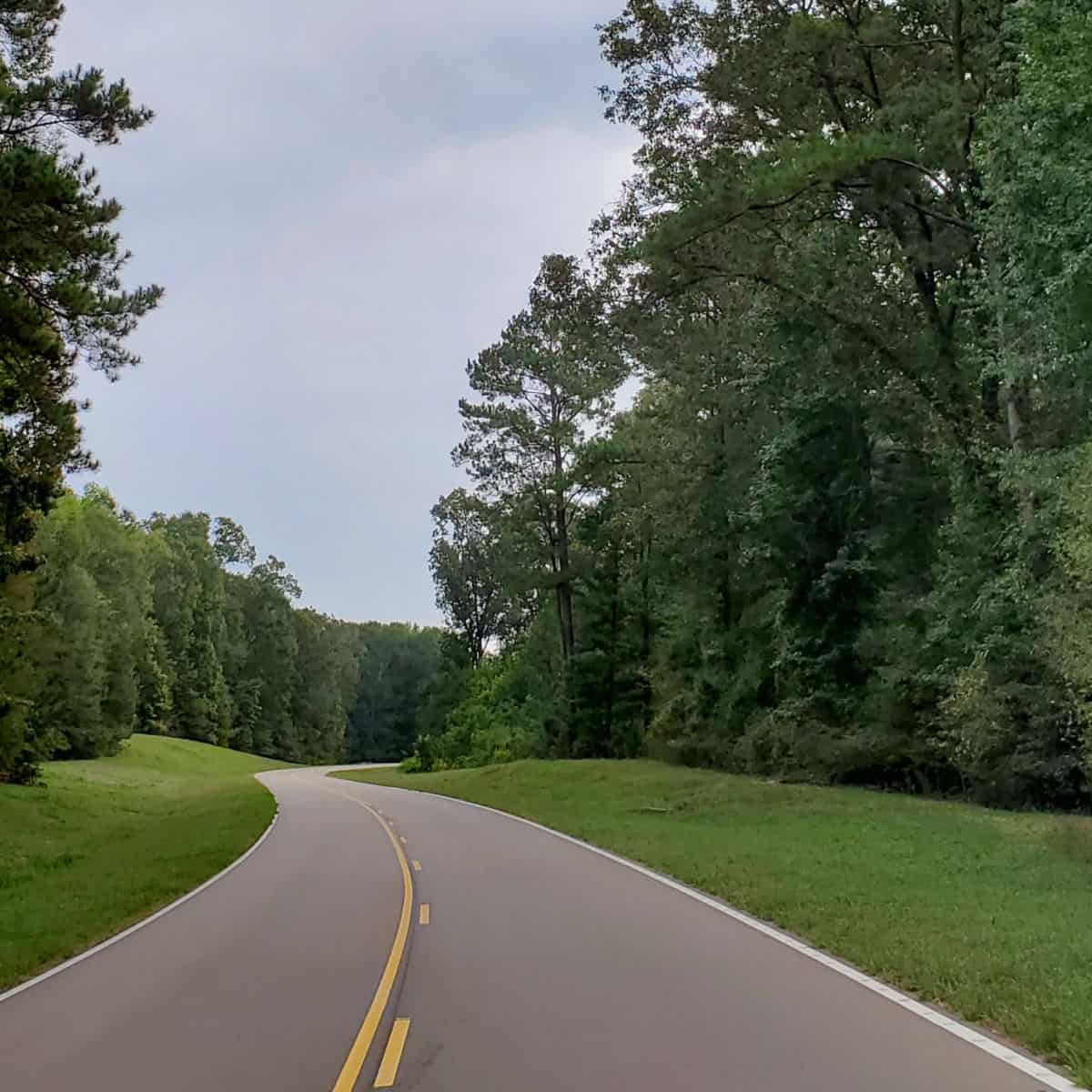
Natchez Trace Parkway
Top Things to do - Picnicking, Camping, Bicycling, Horseback Riding, Fishing, Hiking the Natchez Trace Scenic Trail
Lodging - Along the parkway, you'll find a few lodging options, including campgrounds, inns, and nearby hotels
Camping- No-fee camping is available along the Parkway. There are 3 RV/tent campgrounds. They are first come first served.
Park Address - 2680 Natchez Trace Parkway
Tupelo, MS 38804
The Natchez Trace Parkway stretches from Natchez, Mississippi to Nashville, Tennessee for 444 miles. The park offers scenic driving, camping, and historic sites.
In the early 19th century the Natchez Trace was a major thoroughfare between the developing East coast and new settlements in the Southwest. The road was used by military expeditions, pioneers, and flatbottom boatmen returning north from their trip down the Mississippi River.
In 1812 when the first steamboats appeared there was no longer a need to traverse the Natchez Trace. The road was dangerous and arduous while the steamboats were much easier.
Today the road is marked with mile markers from south to north. There is a maximum speed limit of 50 mph. The parkway is perfect for exploring especially since no commercial vehicles are allowed on the parkway.
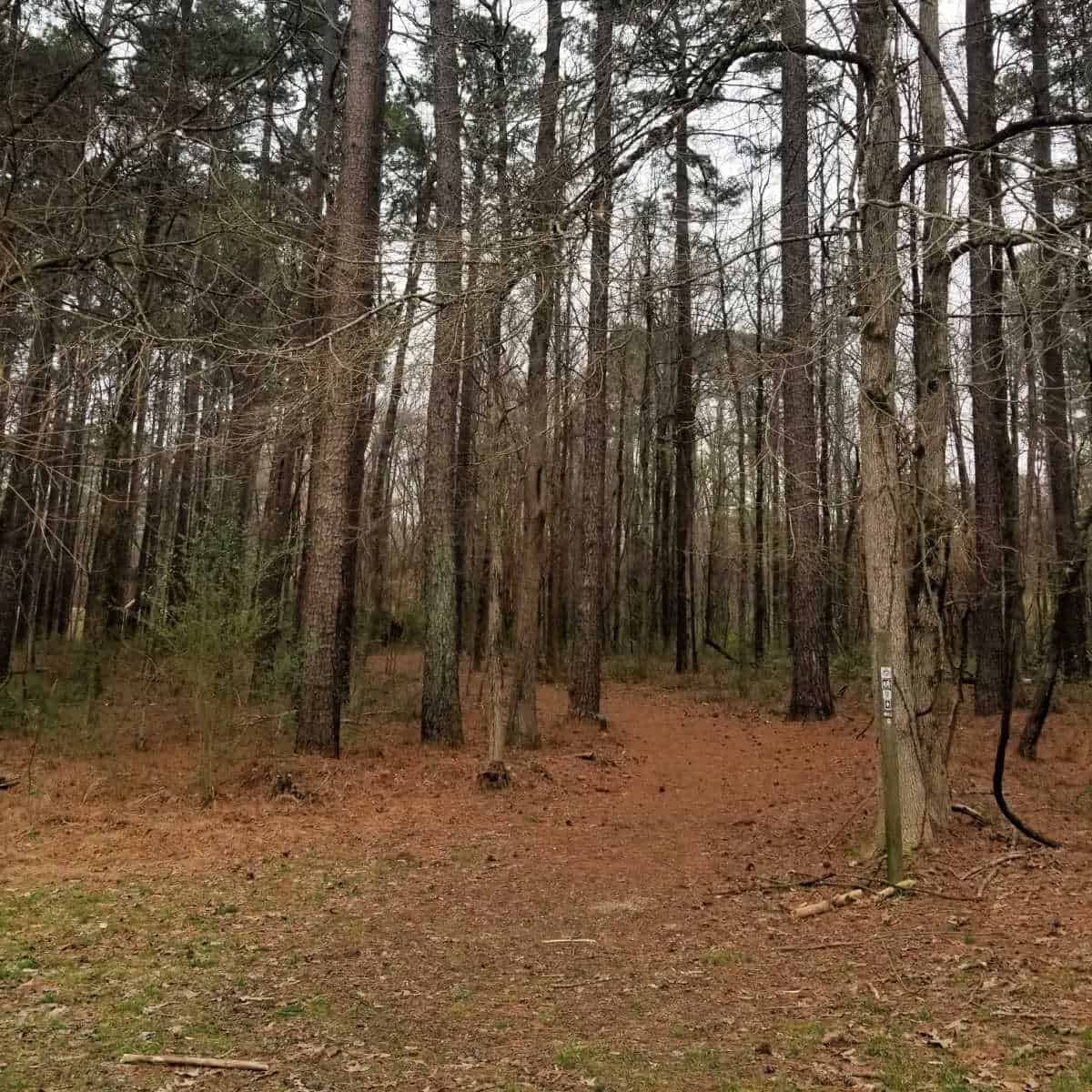
Natchez Trace National Trail
Top Things to do - Hiking, Horseback Riding, Picnicking
Lodging - While the trail itself doesn't have lodging options, there are accommodations available in nearby towns and cities along the route.
Camping- Camping along the Natchez Trace National Scenic Trail is possible at several campgrounds located along the parallel Natchez Trace Parkway. These campgrounds offer tent and RV sites with amenities like restrooms and picnic areas. Some notable campgrounds include Rocky Springs, Jeff Busby, Meriwether Lewis, and Davis Lake.
Park Address - 2680 Natchez Trace Parkway
Tupelo 38804
The Natchez Trace National Trail includes four sections in Mississippi and one in Tennessee. The trail includes 67 miles of trails.
This scenic trail offers you the opportunity to hike or horseback ride trails similar to the first travelers of the Trace. There are a total of five unconnected segments that run parallel to the Natchez Trace Parkway.
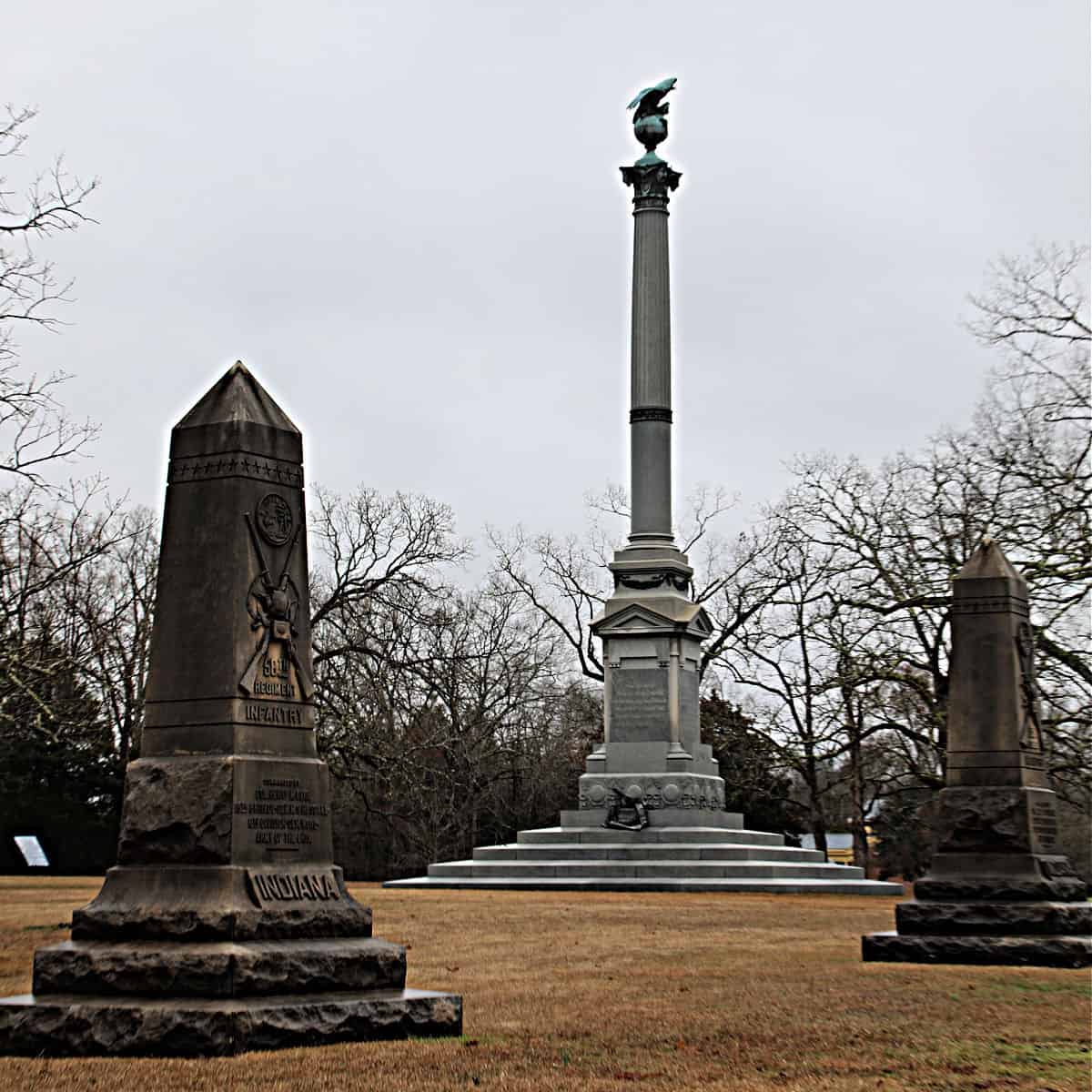
Shiloh Military Park
Top Things to do - visit Museums/Interpretive Centers, Audio Visuals/Films, Self-Guided Auto Tour, Ranger Programs, Living History, Junior Ranger Programs, Hiking, Biking, Visit the Shiloh National Cemetery, Wildlife Viewing, Tour the Corinth Contraband Camp - Birthplace of Freedom, Explore the Site of Battery Robinett, Visit the Site of Davis Bridge Battlefield
Lodging - Lodging options near Shiloh National Military Park include hotels, motels, bed-and-breakfasts, and vacation rentals in Savannah, Tennessee. Corinth, Mississippi, offers additional accommodations.
Camping- Camping near Shiloh National Military Park is possible with several options in the vicinity. Nearby state parks, such as Pickwick Landing, Tishomingo, and J.P. Coleman, also provide camping facilities. Additionally, there are campgrounds along the Natchez Trace Parkway.
Park Address - 1055 Pittsburg Landing Road
Shiloh 38376
Shiloh Military Park is located in Northeastern Mississippi and Southwestern Tennessee. The park is open year-round and offers the opportunity to explore a Civil War battlefield.
In 1862 during the Civil War, Union forces moved forward to attack a railroad crossing at Corinth, Mississippi. On their way south the Union forces stopped at a log church called Shiloh Meeting House near Pittsburg Landing, Tennessee.
Confederate forces marched north to engage the Union forces in battle. The rail crossing was so vital that around 100,000 soldiers battled here between April 6-7, 1862. The initial battle ended with no clear winner.
The Confederate troops withdrew south to Corinth and faced off with a larger Union force. The Confederate troops soon abandoned the railroad crossing to the Union forces.
On October 3-4, 1862, Confederate forces tried to recapture Corinth in a battle that resulted in 7,000 casualties.
Today you can visit an interpretive center in Corinth, Mississippi that includes exhibits and films about the battles. On the Tennessee side, you can take a 12.7-mile driving tour around the battlefield with 20 sites.
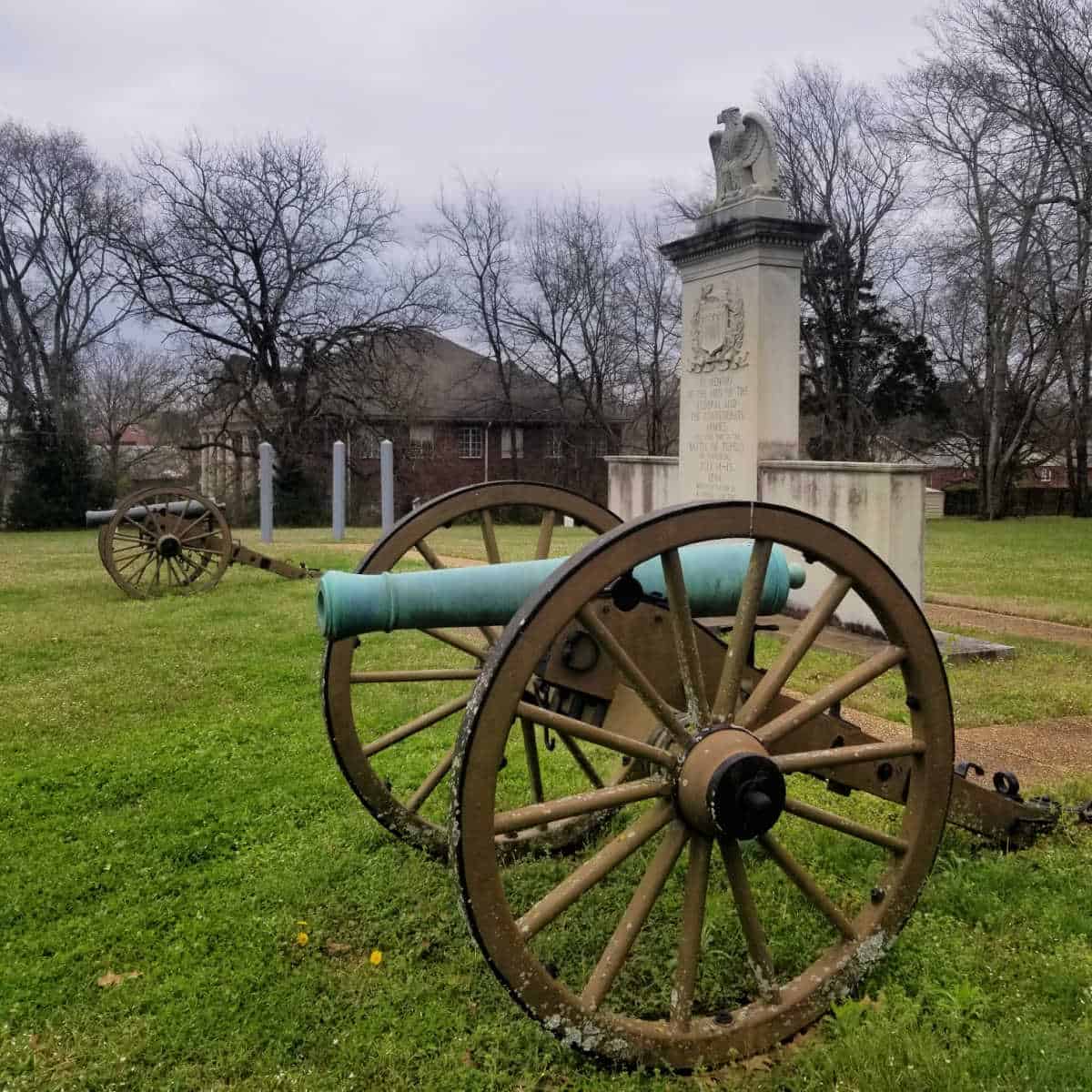
Tupelo National Battlefield
Top Things to do -Explore The Battle of Tupelo, visit Natchez Trace Parkway Visitor Center, visit Tupelo National Battlefield Monument
Lodging - Lodging options near Tupelo National Battlefield in Tupelo, Mississippi, include hotels, motels, and bed-and-breakfasts within the city itselfVacation rentals and accommodations in nearby towns are also options.
Camping-. Camping is available in nearby state parks like Tombigbee State Park and Trace State Park.
Park Address - 2083 Main St
Tupelo 38801
Tupelo National Battlefield is located in Northeastern Mississippi in downtown Tupelo. The site is only 1 acre and offers the opportunity to view a couple of cannons and see part of the Civil War battle site.
The Battle of Tupelo occurred on July 14-15, 1864. Historians believe that the battle was a victory for the Union forces.
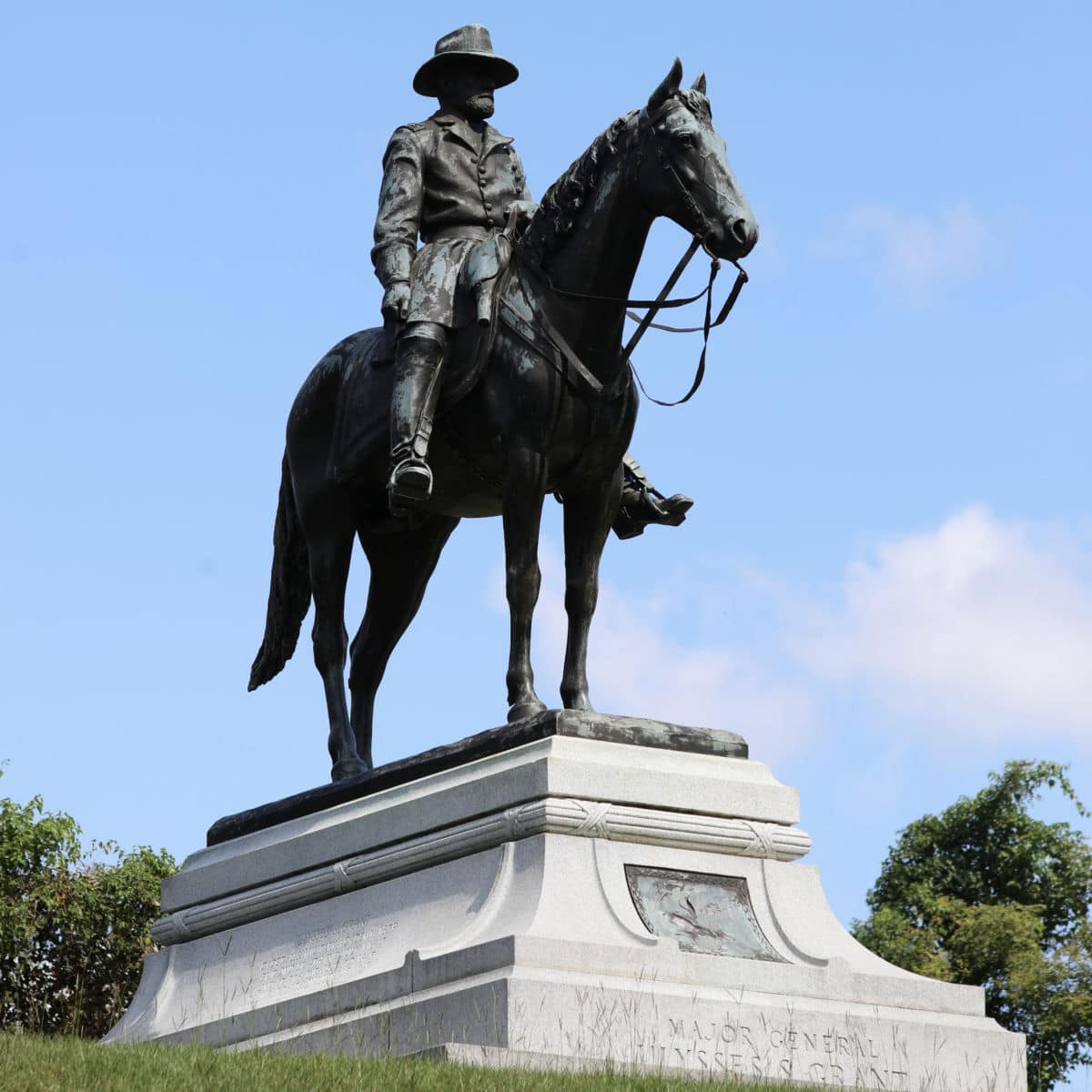
Vicksburg National Military Park
Top Things to do -Watch Vicksburg National Military Park's Orientation Film, Walking, Hiking, Biking, Ranger Programs, Living History Programs, Guided Tours
Lodging - There are no National Park Lodges within the park.
The closest lodging is in Vicksburg and Jackson, Mississippi.
Camping- There are no campgrounds within Vicksburg NMP.
Park Address - 3201 Clay Street
Vicksburg 39183
Vicksburg NMP is located in West-central Mississippi approximately 45 miles west of Jackson. The park is open year-round and features a driving tour, the Union Ironclad Gunboat, and 1,330 monuments and markers.
The City of Vicksburg was a highly valued strategic location during the Civil War. The city was on a hill overlooking the Mississippi River.
President Abraham Lincoln called Vicksburg the Key to the Confederate South. During the Spring 1863, Major General Ulysses S. Grant led the Union Army of Tennessee toward Vicksburg. After losing two battles in Late May Major General Grant circled the Union forces around the City of Vicksburg cutting off communications and supplies.
The city endured 47 days of artillery bombardment, increasing sickness and decreasing food supplies. Confederate General John C. Pemberton agreed to surrender on July 4, 1863.
Visitors can explore the 16-mile auto tour road that takes you through the main portion of the park. There are 1,330 monuments and markers throughout the battlefield.
The U.S.S. Cairo in a Union ironclad gunboat that sunk in the Yazoo River in 1862. This is a site not to be missed within the park. There is a museum and you can walk around and inside the ship.
The Vicksburg National Cemetery is located next to the U.S.S. Cairo. There are 17,000 Union troops buried in this cemetery.
You can hire a licensed professional guide for a personalized tour of the battlefield. The guides ride in your car and offer information and details on what occurred during the Battle of Vicksburg.
List of National Parks in Mississippi
- Brices Cross Roads National Battlefield Site
- Emmett Till and Mamie Till-Mobley National Monument (IL)
- Gulf Island National Seashore (FL, MS)
- Medgar and Myrlie Evers Home National Monument
- Natchez National Historical Park
- Natchez Trace Parkway (also Alabama, Tennessee)
- Natchez Trace National Trail (also Alabama, Tennessee)
- Shiloh Military Park (TN, MS)
- Tupelo National Battlefield
- Vicksburg National Military Park (also Louisiana)
Affiliated Sites
- Mississippi Delta National Heritage Area
- Mississippi Gulf National Heritage Area
- Mississippi Hills National Heritage Area
There are 8 National Parks in Mississippi that bring in over 6.5 million visitors. These visitors produce over $206 million in economic benefits.
Mississippi National Parks include 3 National Heritage Areas, 1 National Trail managed by the park service, 1, 422 National Register of Historic Places Listings, and 39 National Historic Landmarks.
There are 5 National Natural Landmarks in Mississippi National Parks along with over 354 places recorded by the Heritage Documentation Program. There are over 1.4 million objects in the Mississippi National Park Museum Collections. National Parks in Mississippi include 376 archaeological sites.
If you have dreamed of working in the National Parks make sure and check out our article on How to Become a Park Ranger. Working in the parks is one of the most amazing jobs you can find. There is just something special about waking up and knowing you are going to work in a beautiful park.
Learn more about National Park Passes for parks that have an entrance fee.
$80.00 - For the America the Beautiful/National Park Pass. The pass covers entrance fees to all US National Park Sites and over 2,000 Federal Recreation Fee Sites for an entire year and covers everyone in the car for per-vehicle sites and up to 4 adults for per-person sites.
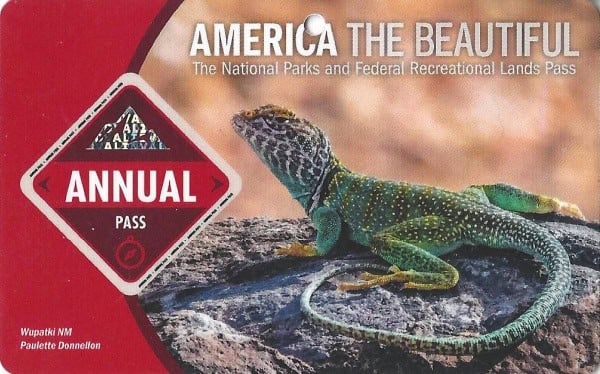
Buy your pass at this link, and REI will donate 10% of pass proceeds to the National Forest Foundation, National Park Foundation, and the U.S. Endowment for Forestry & Communities.
National Park Free Entrance Days -Mark your calendars with the five free entrance days the National Park Service offers annually.

For a fun adventure check out Escape Campervans. These campervans have built in beds, kitchen area with refrigerators, and more. You can have them fully set up with kitchen supplies, bedding, and other fun extras. They are painted with epic designs you can't miss!
Escape Campervans has offices in Vancouver, Seattle, Portland, San Francisco, Las Vegas, Los Angeles, Phoenix, Salt Lake City, Denver, New York, and Orlando
National Parks in neighboring states
We also have a printable checklist of all 419 National Park properties in the United States available.
For an entire list of US National Parks head over to our list of US National Parks in Alphabetical Order.
Make sure to follow Park Ranger John on Facebook, Instagram, Pinterest, and TikTok
